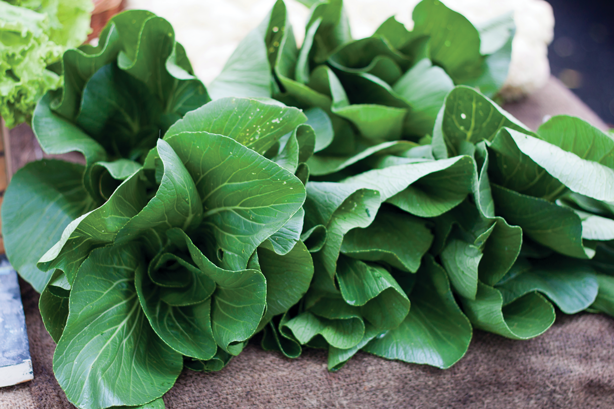By Dessa Bayrock (The Cascade) – Email
Print Edition: April 9, 2014

Harvest Box is a really cool initiative where, for a mere $7, anyone can sign up to get a box of fresh produce. SUS joined the program as an order/pick-up location last fall, and I’ve signed up a couple of times for some fresh veggies. Sometimes you need a reminder from the universe to eat your greens, since shopping for vegetables isn’t exactly on the top of the typical student to-do list. Harvest Box can’t tell you in advance what you’ll get, but they do promise that they prioritize local produce and will always deliver a variety of half a dozen fruits or veggies — meaning you’ll never end up with a box of just apples.
But while this mystery component is cool — it’s like Christmas, only with vegetables! — opening that promising brown box occasionally reveals something completely unexpected and/or perplexing.
In my most recent box, for example, I was given the twin gifts of eggplant and bok choy.
Never in a million years would I have purchased either of these plants on my own. But here I was with two weird vegetables and no idea what to do with them.
Luckily, the internet is my friend. If you ever end up with an ingredient and no idea what to do with it, I highly recommend Googling the shit out of it and just seeing what pops up.
In the meantime, I have some tips and tricks for anyone thinking about experimenting with bok choy.
Ingredients
Bok choy (How much lettuce would you eat in a salad? That’s how much bok choy you should have.Alternatively, the amount that you receive in your Harvest Box.)
Salt and pepper to taste
Fresh garlic to preference (one or two cloves)
1 or 2 tbsp of vegetable or olive oil
Grated cheese (optional and to preference)
Directions
Step one: prep work
First, cut each head of bok choy in half, or quarters if they’re big heads. You want pieces, not individual leaves. Fill a large bowl with cold water and tuck the pieces in. The water will have an anti-wilting effect on the bok choy, so leave it just chillin’ for 10 or 20 minutes. Rub the leaves with your fingers to remove any grit or grime. When it’s done soaking, pull it out and pat as much water out as you can with a paper towel. While you’re waiting, slice or press a clove of garlic or two and have that ready for the cooking process.
Step two: heat things up
Put a pan on your stove at medium heat, pour in the oil until you have a thin layer across the bottom of the pan, and add the garlic. Put your cleaned bok choy in the pan, cut side down. If it spits at you, you may want to turn the temperature down a little. Just let it cook for a few minutes. When it starts to crisp up, flip the bok choy so another side of it sits in the oil. Grind pepper and salt over the crispy sides of the bok choy as you flip. Add more oil if the veggies start to stick to the pan.
Step three: presentation
Once the bok choy is heated through and the cut sides are nice and crispy, transfer from pan to plate. You can leave it in quarters and leave it up to the eater to cut it into bite-sized pieces. If you’re feeling adventurous, you could sprinkle some freshly grated cheese over the whole kit and caboodle to make it look less like wilted leaves.


